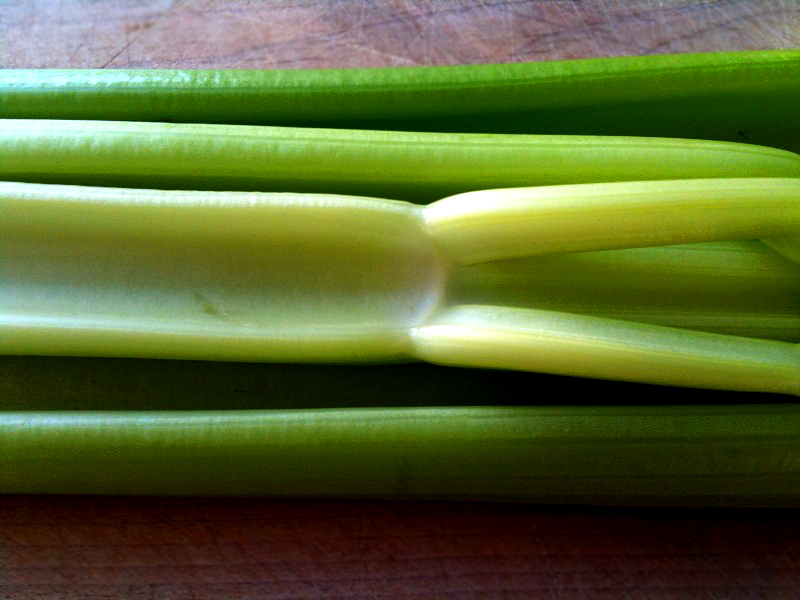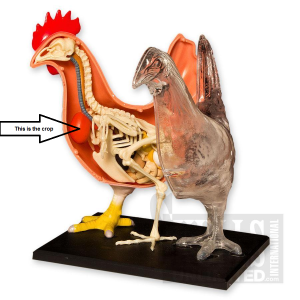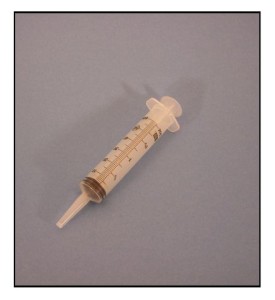Celery. It seems like such an innocuous and unassuming vegetable. Don’t be fooled though by its innocent demeanor. This fibrous crudite is actually a sinister killer of backyard chickens everywhere.
Just two days ago – celery almost spirited away a hen owned by an acquaintance here in Boise. This is how I helped this chicken keeper triumph over a celery attack on her flock.
Two nights ago, I receive a call from a friend, Conchita, who was visiting at the home of a friend of hers whom I don’t know well. Conchita called on behalf of her friend who was greatly distressed about the condition of one of her laying hens.
This bird had recently began behaving and appearing oddly. The hen was discribed to be over the phone as acting listless and weak. Conchita then relayed to me that the hens crop looked rather strange as it was full and riding off to one side on the bird’s chest.
A lopsided crop immediately made me suspicious that the hen might have an impacted crop. I first asked if the hen had access to long grasses, to which I was told, “No.” I then asked about the silent menace, celery. Indeed this newbie chicken keeper had unwittingly shared an entire bunch of celery with her flock as a snack – not realizing the danger this posed to her hens.
What is a Chicken Crop?
Here is some basic chicken anatomy. As you well know, chickens lack teeth and thus cannot chew their food in aid of digestion. Instead chickens (and all other birds) have a three part “stomach” system. First food is swallowed and coated in the bird’s mouth with saliva containing digestive enzymes, such as amylase, and then the food travels from the mouth through the esophagus to the crop. The crop is a muscle pouch found at the base of the neck which serves as sort of a holding area for food. Swallowed food can remain in the crop for up to 12 hours before moving further down the digestive track.
From the crop food then travels to the proventriculus (the “stomach”) where hydrocloric acid and digestive enzymes, such as pepsin, are secreted to help significantly break down the food. The food then is passed from the proventriculus to the ventriculus, which is more commonly called the “gizzard.” The gizzard acts as the chicken’s “teeth” as this very strong muscle is often lined with small grit (pebbles swallowed by the bird) that help grind, mix and mash the food for digestion. The food then moves through the rest of the digestive track – to the intestines, etc.
Impacted Crop
A chicken’s crop can become impacted – essentially backed up and the food cannot move to the proventiculus for further digestion. The most common caused of impacted crop is the consumption of long, fibrous materials that get tangled and balled up inside the bird, such as long celery stalk fibers, long grasses (e.g. hay or straw), pieces of string or twine, rubber bands, etc. However, it is noteworthy that the consumption of unusually large and tough foods (e.g. meat, corn cobs, etc.) or bacterial/fungal infections may also cause impacted crop.
There are some tell-tale signs that a chicken’s crop may be impacted. These signs include:
- The crop being unusually tight and firm
- The crop being full in the morning time (when the bird’s crop should be empty)
- The crop being tender to the touch
- The crop being located high on the bird’s chest or off to one side (i.e. lopsided)
- The bird’s breath smelling putrid
If left untreated the food in trapped in the impacted crop will begin to rot and ferment. A bird suffering from impacted crop may act lethargic, weak or dizzy. Ultimately, if this food is not cleared from the chicken’s crop the bird will die.
Home Remedy Treatment of Impacted Crop
Though you could take your bird to an avian vet for crop surgery and have the trapped food manually removed, you may be able to solve the issue on your own with some basic home treatments.
In the past I have had good success by giving the hen with an impacted crop a warm bath for about 20 minutes. I then take the ill chicken in an old bath towel and force a little olive oil down her throat (a water/medicine syringe can be helpful for this process). I then hold the bird in the towel and gently massage its crop for a considerable amount of time (i.e. an hour or more). In my personal experience, this has been enough to help the bird pass (i.e. poop out) the trapped food.
Other chicken experts recommend a slightly different technique from the one I’ve used in the past. They generally suggest forcing water and olive oil down the bird’s throat (also using the water/medicine syringe) then massaging the chicken’s impacted crop. However, in this technique they try to induce the bird to vomit up the materials stuck in the crop and will hold the bird inverted at angle. This alternative technique also tends to have great success in treated impacted crop.
Prevention is the best way to keep your backyard flock safe from impacted crop. Never feed your birds long stalks of celery or long green grasses. If you do have a bird that comes down with an impacted crop despite your best efforts, be sure to act fast to her it move the impacted food out of the crop for the bird’s survival.
RESOURCES:
- Amazon – Buy you own cool Chicken Anatomy Model Here: 4D Vision Chicken Skeleton & Anatomy Model by 4D Master
- Amazon – Buy your own Water/Medicine Syringes Here: 12 cc Disposable Syringe with Tapered Curved Tip
- Extension.org – Avian Digestive System LINK
- Poultry Keeper – The Digestive System of a Chicken LINK
- Nutrena World – Digestion: Know Your Bird’s Inside & Out LINK
- Poultry Keeper – Impacted Crop LINK
- Chicken-Chick – Answers from Chicken Vet on Impacted Crop LINK
- Tilly’s Nest – Crop Issues LINK
SUPPORT THE URBAN CHICKEN PODCAST:
- Support the Urban Chicken Podcast by shopping Amazon starting here: Amazon
- If Amazon is not your thing – you could also support the show HERE



